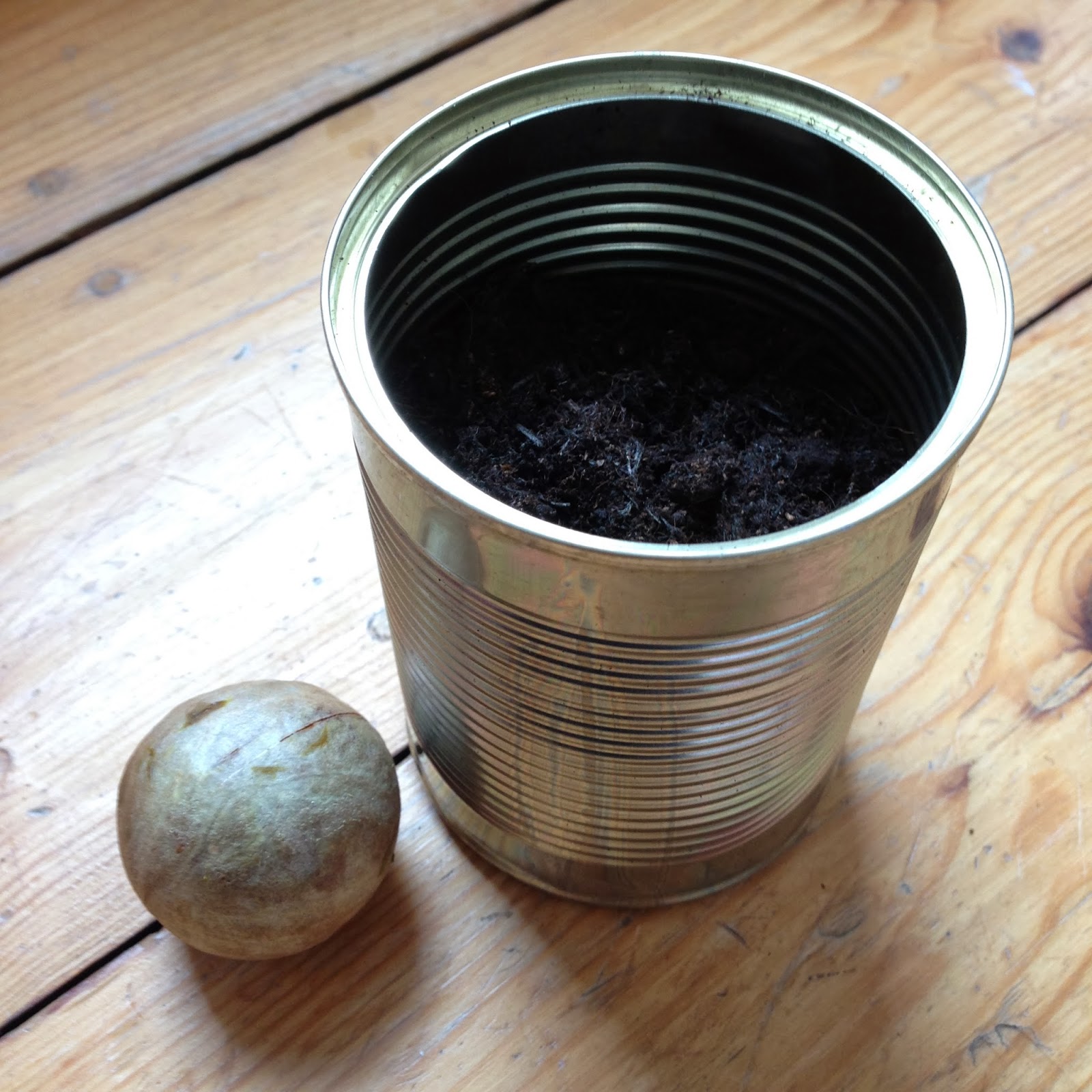I never bought tomato seeds (nor pepper/chilli) to grow because they are so easy to obtain from the actual fruit. Heirloom tomatoes can be very expensive to buy, so whenever I do buy them, I take the time to save their seeds. It's not as straight forward as chilli or pepper seeds which you can just knock out and leave to dry overnight, but it's not much harder. This is how I go about it.
When you have a nice specimen of tomato that you like (this one is a marmande tomato) remember to save its seeds before cooking or eating it which I have often forgotten!
Slice it down the middle and you should see its seeds.
You don't have to remove all the seeds, just enough to plant, keep, or give to friends. Put in a glass/cup/jar and fill with water.
Some say to cover with cling film and leave for a few days until mould forms on the top but I didn't like dealing with smelly mouldy water so I leave it uncovered, and change the water every day. But before changing the water, I give it a bit of a stir so any tomato pulp loosens, tip out the old water, with the floating pulp, and add fresh water. Sometimes I do it two or three times if there is a lot of pulp. After about 3-5 days when the seeds look free of most pulp, give it a final good rinse, pour as much water away and take out the seeds.

I found the best place to dry them is on a large ceramic plate spread out as much as possible for quick drying. If there is a lot of water, you can raise one corner slightly so the water drains to one end and soak it up with a kitchen towel. Once the seeds are fully dried, which can take up to a week, they might stick to the plate but are easy to remove by "scratching" them off. (Which is why it is not advisable to dry them on paper like I learnt the hard way!)
Store your seeds in a dry place, labelled nicely in a paper envelope or jar ready for the next planting season.






































.JPG)











